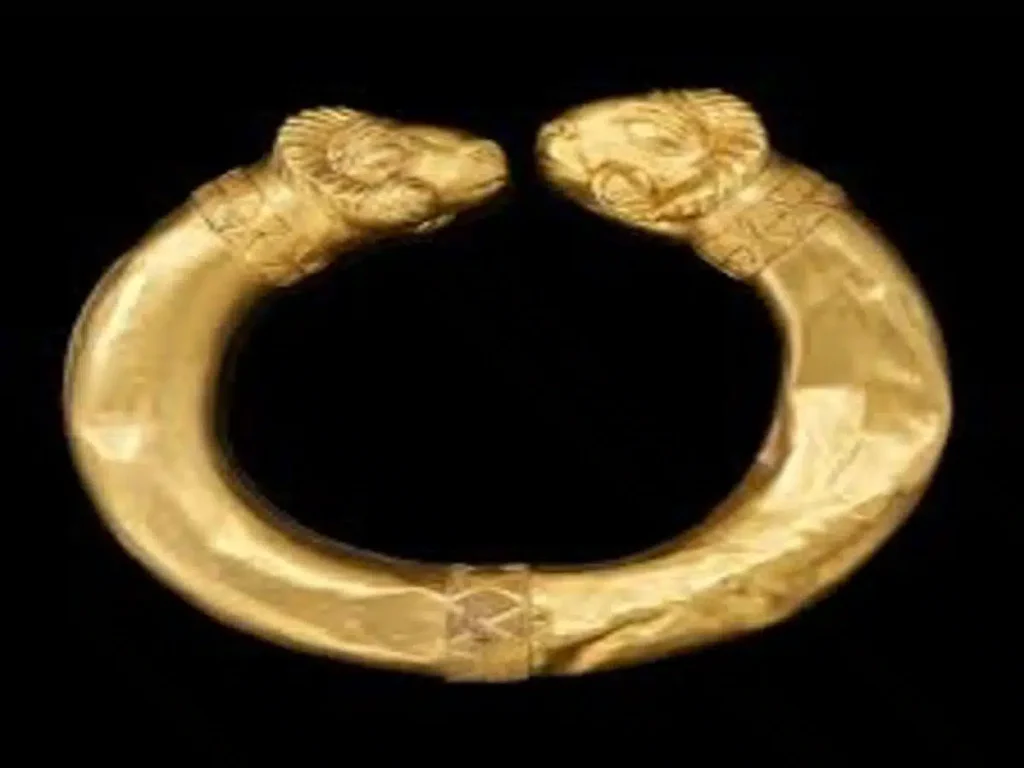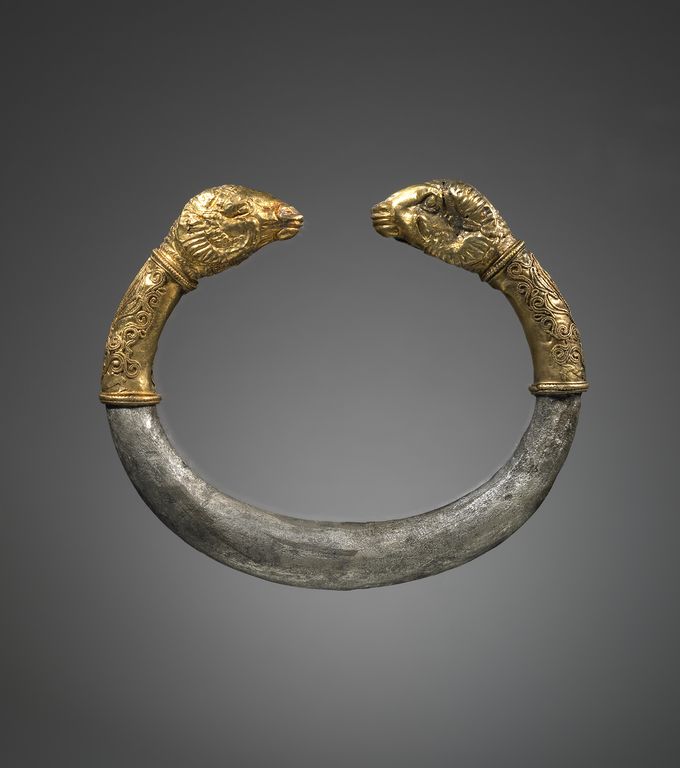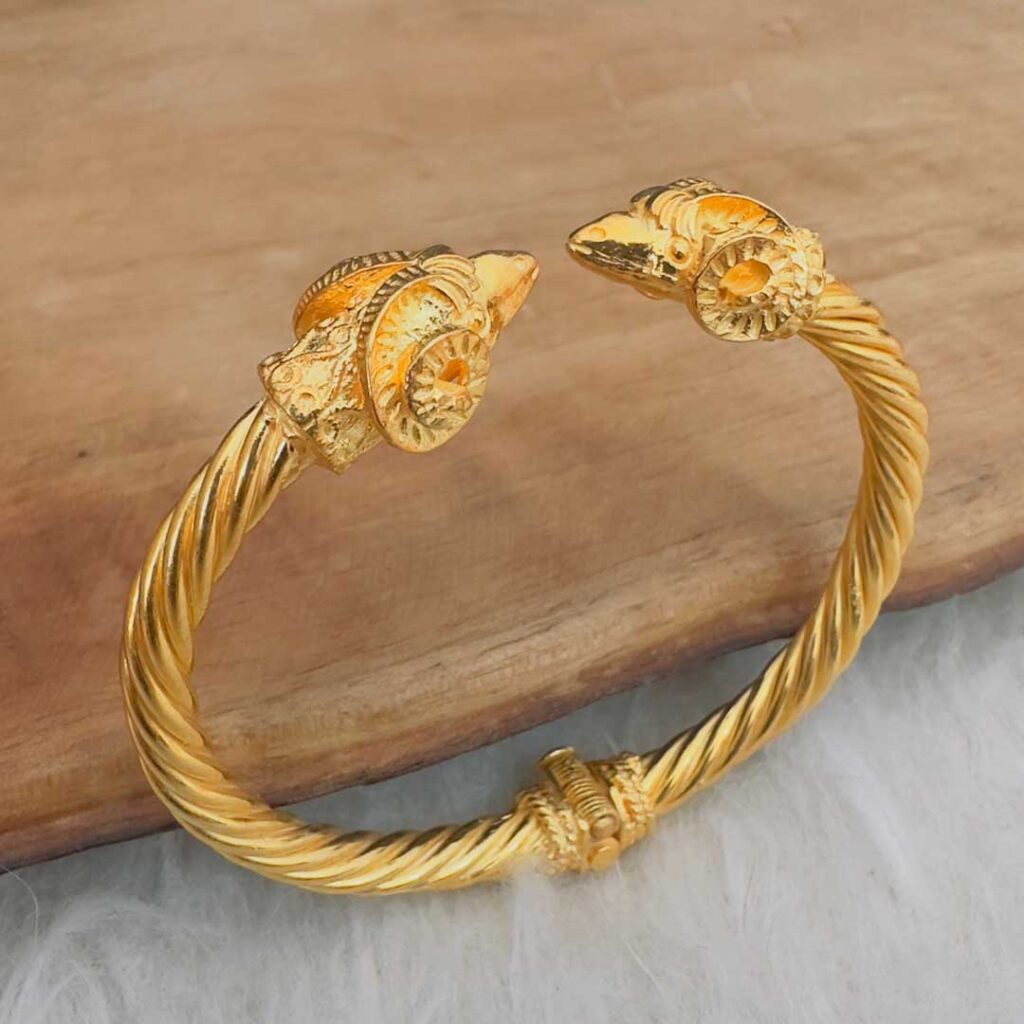In the realm of luxury adornments, the allure of Egyptian jewelry often surpasses that of contemporary designs. Imagine owning a piece of history—a gold bracelet from the Achaemenid era, adorned with intricately crafted ram’s head terminals—valued at less than a modern Cartier bracelet. These exquisite artifacts, dating back to the 5th century B.C., not only showcase unparalleled craftsmanship but also offer a tangible connection to ancient civilizations. Delving into the origins and significance of Egyptian jewelry reveals a rich tapestry of cultural heritage and artistic mastery that continues to captivate collectors and historians alike.
AN ACHAEMENID GOLD RAM-HEADED BRACELET

Egyptian jewelry has a history as rich as the civilization that created it. Dating back over 5,000 years, jewelry in ancient Egypt was more than just decoration—it symbolized power, protection, and religious significance. Pharaohs, nobles, and even commoners adorned themselves with gold, lapis lazuli, turquoise, and carnelian, believing these materials held divine energy. Every piece of Egyptian jewelry, from broad collars to intricate amulets, was crafted with spiritual meaning, reflecting the wearer’s status and connection to the gods.
The craftsmanship of Egyptian jewelry was unparalleled in the ancient world. Goldsmiths excelled in techniques like granulation and cloisonné enamel, creating timeless jewelry. Often buried with the dead for safe passage to the afterlife, stunning artifacts have been found in tombs such as Tutankhamun’s. Today, these historical works inspire modern designs, yet some original pieces sell for less than luxury brands like Cartier.
Notable Pieces of Ancient Jewelry That Have Sold for Less Than Cartier
Auctioneers have sold some rare pieces of Egyptian jewelry—once worn by royalty and nobles—for surprisingly low prices compared to modern luxury brands.
The Achaemenid gold ram-headed bracelet, a fine example of ancient artistry, sold for less than a modern Cartier piece. Despite its intricate gold craftsmanship, its value is lower than many luxury designer items.
Another remarkable find is the scarab amulet rings, which held deep spiritual significance in ancient Egypt. Artisans often carved these rings from lapis lazuli, carnelian, or faience.”
“Auction houses have sold many original Egyptian jewelry pieces featuring scarabs for prices far below what one might pay for a diamond Cartier ring.
Gold and lapis lazuli necklaces, once worn by Egyptian queens, have also appeared in auctions with relatively modest price tags. These exquisite pieces of Egyptian jewelry have intricate gold links and rich blue stones, showcasing ancient luxury. Surprisingly, some authentic artifacts now sell for less than a new Cartier Love bracelet due to changing collector demand and market trends.
Even elaborate broad collars and pectorals, reserved for the elite of ancient Egypt, have not always fetched sky-high prices. These magnificent pieces, adorned with inlays of turquoise, carnelian, and amethyst, once symbolized divine power. In today’s auction market, original Egyptian jewelry can be less valued than modern luxury items, making them hidden gems.
Why Has the Value of Ancient Egyptian Jewelry Declined?
The value of Egyptian jewelry has declined in recent years due to shifting market trends and changing collector preferences. Ancient artefacts have lost exclusivity due to more excavated pieces and replicas. Many collectors now favour luxury brands like Cartier and Tiffany & Co. as status symbols, while historical jewellery attracts fewer enthusiasts.
Another key factor in the decline of Egyptian jewelry prices is the influence of museums and institutions. Most exceptional pieces are in museums, limiting high-profile sales that increase demand. Strict antiquities trade regulations hinder private collectors’ access to genuine artifacts, affecting market value.
Despite these challenges, Egyptian jewelry remains a fascinating and historically significant investment. While some pieces have sold for less than a modern Cartier bracelet, their cultural and artistic value is undeniable. As interest in ancient history and archaeology continues to grow, there is always the potential for a resurgence in demand for these timeless treasures.
Comparing Ancient Egyptian Jewelry to Modern Luxury Brands


When comparing Egyptian jewelry to modern luxury brands like Cartier or Tiffany & Co., the differences go beyond just price. Egyptian artisans handcrafted gold necklaces, scarab rings, and broad collars using techniques like granulation, filigree, and inlay work. Unlike mass-produced luxury items, each piece of Egyptian jewelry was unique, often carrying deep spiritual or symbolic meaning. Yet, despite their historical significance, many of these artifacts now sell for less than contemporary designer jewellery.
One major distinction between Egyptian jewelry and modern luxury brands is their purpose and exclusivity. Ancient Egyptian artifacts symbolized status and spirituality, while Cartier emphasizes branding and trends. Today, Cartier’s Love bracelets and Panthère collections are highly valued for their association with wealth, whereas genuine Egyptian pieces, some over 3,000 years old, are often ignored by mainstream buyers.
However, in terms of craftsmanship and artistry, Egyptian jewelry rivals even the finest modern designs. The exquisite goldsmithing and rare gemstones like lapis lazuli and turquoise give these ancient pieces their timeless value. While modern luxury brands dominate fashion, true collectors understand that owning an Egyptian artifact means possessing a significant piece of history beyond mass-produced items.
Where to Find and Purchase Authentic Egyptian Jewelry Today
Acquiring authentic Egyptian jewelry requires careful consideration to ensure the pieces are genuine and ethically sourced. Reputable auction houses like Christie’s and Sotheby’s occasionally feature ancient Egyptian artifacts in their collections. For instance, a recent auction highlighted unique gold necklaces, rings, and trinkets from ancient Egypt, some of which sold for less than contemporary luxury pieces.
For those interested in contemporary pieces inspired by ancient designs, online retailers such as Nilestone offer handcrafted jewelry made by skilled Egyptian artisans. Their collection includes items featuring authentic turquoise, sterling silver, and unique beads, reflecting the rich heritage of Egyptian craftsmanship.
Additionally, platforms like Etsy host a variety of sellers offering both vintage and modern Egyptian jewelry. When purchasing from such marketplaces, it’s essential to review seller ratings and product descriptions carefully to ensure authenticity. Always inquire about the provenance of ancient pieces and seek certificates of authenticity when possible.
Conclusion
Egyptian jewelry is prized for its exquisite craftsmanship and rich historical significance. Though some rare pieces may be priced lower than modern luxury brands, their timeless value is unparalleled. Whether for collectors, historians, or jewelry enthusiasts, owning a piece of ancient Egypt is like holding a fragment of history. As interest in ancient artifacts continues to grow, these unique pieces may one day reclaim their rightful status as priceless symbols of elegance and heritage.

